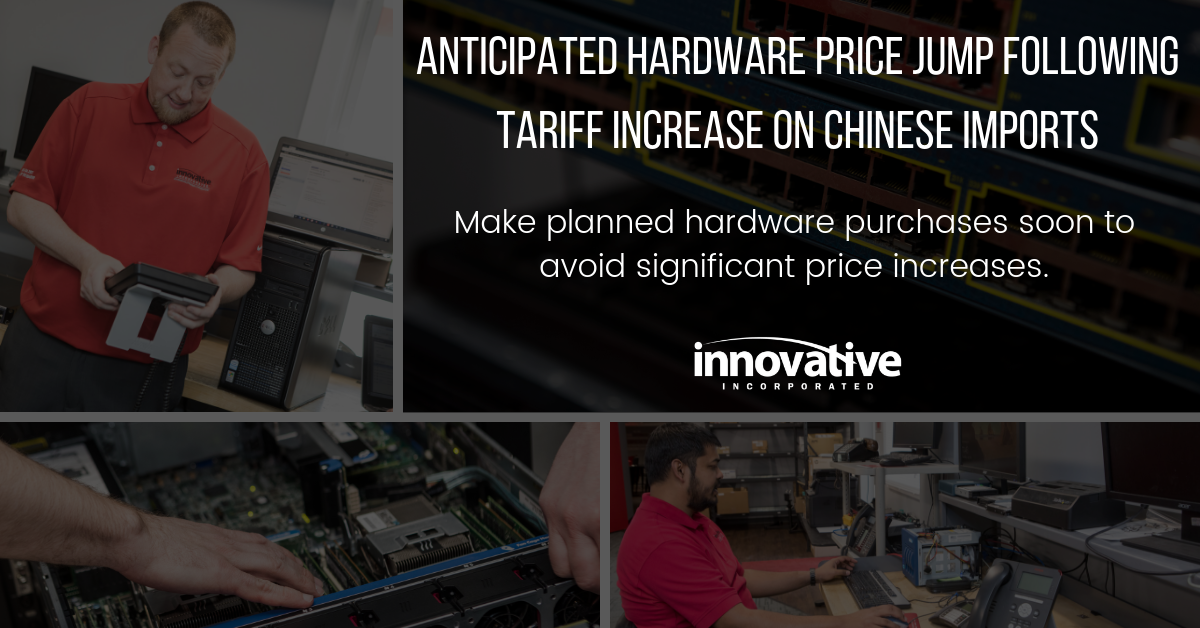Anticipated Hardware Price Jump Following Tariff Increase on Chinese Imports
Technology Strategy | Business Strategy | Devices | Purchasing
If you're planning to upgrade hardware or networking infrastructure in your business this year, you may see significant cost savings by purchasing that equipment soon (i.e. this month) thanks to increased tariffs on Chinese imports.
May 10, 2019 Brought a 25% Tariff on Many Chinese Imports
On May 10, 2019, the United States raised tariffs on $200 billion of Chinese imports to 25% from 10%.
The products included on this tariff list, known as List 3, were initially impacted by a 10% tariff that took effect in September 2018. The list includes products like telecommunications equipment, motherboards, graphics cards, CPU coolers, processing units, computer modems, routers, and other computer parts.
On May 31, the Office of the United States Trade Representative published a notice that List 3 products exported from China prior to May 10, 2019, will remain subject to the 10% tariff if they enter the U.S. before June 15, 2019. All items entering the U.S. after June 15, 2019, are subject to the new 25% tariff.
ANTICIPATED HARDWARE PRICE INCREASES
What and how these tariffs will impact specific product pricing is yet to be seen. Distributors are still working through existing stock giving some vendors time to explore the feasibility of moving production out of China to avoid tariffs.
However, it’s reasonable to expect at least some vendors to raise prices.
Cisco has already notified re-sellers of price increases on some of their impacted Cisco Meraki products. Additionally, Intel has not yet announced specific price increases, but notified re-sellers that some systems and products may see price increases related to the tariffs.
Business Technology Implications
While the individual consumer paying an additional $150 for a $600 PC may be frustrated by the price hike, businesses and large organizations budgeting tens if not hundreds of thousands of dollars for infrastructure upgrades this year will face potentially project-halting cost increases.
Even if tariffs are eventually revoked, it is unlikely vendors would lower prices after they’ve been increased.
If you are planning a hardware or infrastructure upgrade in the next 9-12 months, you may want to consider moving up your timeline to avoid future price increases. Even if your vendors avoid future price increases, you won't pay more than you will in a few months, and odds are good that you'll save yourself from tariff-related price increases.
If you are planning an upgrade to Windows 7 and Server 2008 machines before the January 14, 2020 end of life date, be sure to evaluate hardware compatibility with your new operating system. You may benefit from purchasing new hardware sooner rather than later, even if your operating system upgrade isn't planned for a few more months.



